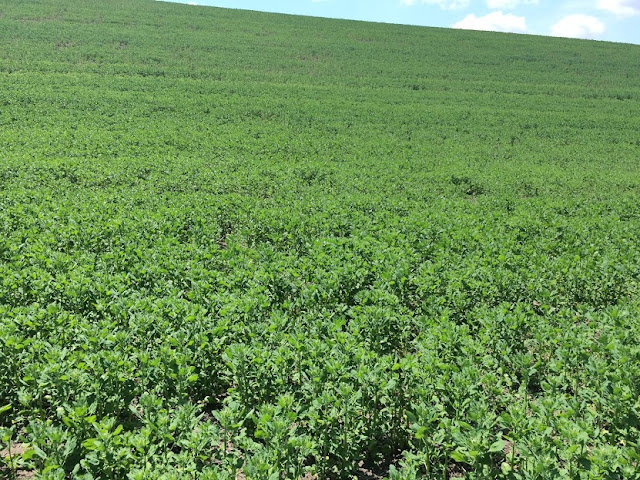So, again, sorry for the lapse in blog posts, but I've been busy. But over the past three weeks, the Sales Account Managers and Regional Managers have been attending training and business sessions at AgroLiquid World Headquarters here in St. Johns, Michigan. They spaced them over three weeks so the group size would be more manageable, I guess. But what training session would be complete without a visit to the North Central Research Station? Well, it would be pretty poor. So here are some pics of what went on. The day was filled with activities planned by the NCRS Research Managers Tim, Stephanie and Jacob with ample support by the NCRS staff as well as the Agronomy Staff.
Dr. Zouheir Masri demonstrated how he extracts plant-usable soil phosphorus at different depths so as to compare different fertilizers for the ability to feed plants over time.
Tim and SAM Brian discuss efficacy of different types of seed-firmers for in-furrow fertilizer application.
Here was a fun time. Tim planted 6 rows of corn, but some of the rows had an issue, such as too shallow, too deep, doubles, population too high or too low, and one was just right. So their mission, should they decide to accept it, was to find the seeds and diagnose the issue.
Tim demonstrated the different types of nozzles used for sprayer application, and when to use which one for the different application goals. He also showed how the Hagie sprayer can make sidedress applications with coulter or Y-Drops.
Stephanie talked about field checking corn. Like growth stage, stand counts and growing conditions.
 All of the college interns have a special agronomy project. Here, OSU student Trevor talks about foliar applications of fertilizer on winter wheat. It was an outstanding presentation. (And Trevor is a student at the premier "O" school: Oklahoma State University.)
All of the college interns have a special agronomy project. Here, OSU student Trevor talks about foliar applications of fertilizer on winter wheat. It was an outstanding presentation. (And Trevor is a student at the premier "O" school: Oklahoma State University.)
Horticulturist Jacob goes over the basics of setting vegetable transplants into a plastic mulch, including fertilizer application.
The NCRS orchard has plenty of learning opportunities, as Jacob explains. AgroLiquid has all of the essential nutrients for top apple production, and all are on display here. There are also some test applicators in the overhead hose lines that are being tested and developed here. Cutting edge stuff.
So that was just a snap-shot of all that went on. But the SAM's all left with increased knowledge for supporting AgroLiquid. Also, there are a number of NCRS tours lined up culminating with THE Agro-Expo on August 16-18. Want to see some of this for your own self? Well show up then.











































